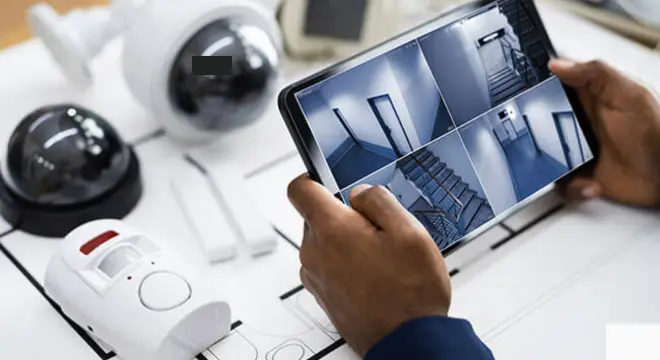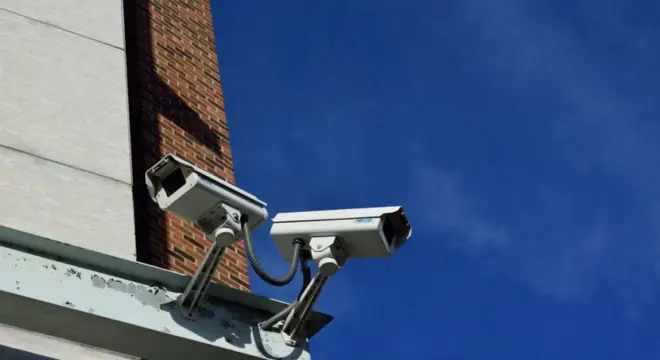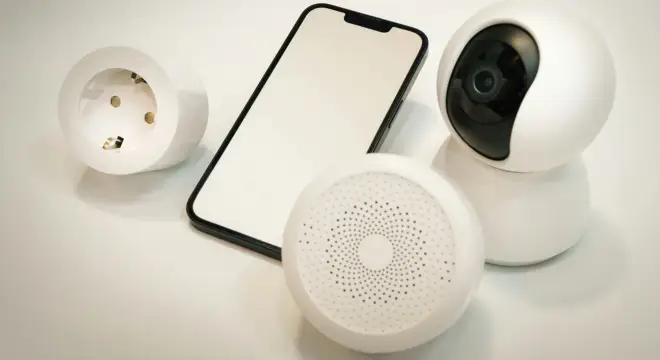An In-Depth Guide to Monitored Alarm Systems: How They Protect Your Home 24/7?
Have you ever wondered how certain alarm systems respond instantly to protect your property? In a world where home security is essential, monitored alarm systems are your trusted safeguard, merging high-tech capabilities with 24/7 professional oversight. These systems keep a constant watch over your home, notifying emergency responders at the first sign of trouble—giving you the peace of mind you deserve.
Unlike traditional alarm setups, monitored systems go beyond a basic alarm ring. They integrate smart devices, sensors, and a comprehensive monitoring network accessible remotely, making them a go-to choice for serious security.
Whether you’re just starting to plan your business security or aiming to enhance it, this article covers everything you need to know about getting started with Alarm Monitoring.
- Understanding Monitored Alarm System?
- Benefits of Monitored Alarm Systems?
- How Monitored Alarm Systems Work?
Understanding Monitored Alarm System?
Monitored alarm systems are purpose-built for comprehensive security, protecting homes and businesses from various threats. They include components like sensors, cameras, and a control panel that work together to create a robust security network.
Want to learn more about how wireless home security systems function? We’ve got you covered
Benefits of Monitored Alarm Systems?
1. 24/7 Monitoring
- Constant Vigilance: These systems watch over your property around the clock, offering continuous protection, even when you’re not home.
- Professional Supervision: Monitoring centers employ trained professionals who assess alerts and respond appropriately.
- Remote Observation: Almost all systems feature mobile app integration, so you can monitor live feeds anytime.
- Vacation Security: Whether you’re on holiday or just away for the weekend, you can rest assured knowing professionals are keeping an eye on your home.
- Reduced Risk: Real-time monitoring greatly reduces the likelihood of theft by ensuring prompt detection and response.
2. Immediate Response
- Quick Alerts: The system instantly notifies the monitoring center of any potential threat.
- Emergency Notifications: Monitoring professionals can quickly reach out to local emergency services, such as police or fire departments.
- Faster Response Times: Instant alerts reduce the delay between detection and response, maximizing protection.
- Actionable Insights: Monitoring personnel can provide first responders with critical information about the situation before they arrive.
- Deter Potential Intruders: Knowing that a monitored alarm system will call for immediate help can discourage potential intruders from targeting your property.
3. Enhanced Home Security
- Layered Protection: Monitored alarm systems combine door/window sensors, motion detectors, and cameras for a comprehensive security network. Check out our guide on what to look for when buying surveillance cameras.
- Instant Intrusion Detection: Advanced sensors detect unauthorized entry as soon as it happens.
- Environmental Monitoring: Many systems also alert you to environmental risks like smoke, carbon monoxide, and water leaks.
- Regular Maintenance: Many monitoring services include maintenance to keep your system functioning at its best.
- Personalized Security Options: Whether you need to monitor pets, elderly parents, or valuable possessions, monitored systems offer customizable options to meet your specific needs.
4. User-Friendly Technology
- Easy Installation: Modern systems are designed for quick setup, often completed in minutes with professional assistance.
- Mobile Apps: User-friendly mobile apps allow you to control and monitor your system from anywhere.
- Voice Commands: Some systems work with smart assistants like Alexa and Google Assistant, making control even easier.
- Automatic Updates: Regular software updates enhance features and improve security.
- Hands-On Training: Many companies offer training to help homeowners use the system effectively.
How Monitored Alarm Systems Work?
Monitored alarm systems consist of several key components that work together to ensure effective security for homes and businesses:
1. Control Panel
The control panel is the command center of the entire system, which links various devices and sensors for active communication. It makes it possible to switch the system on or off, modify parameters, and send notifications. Other controls in modern systems come with touchscreens or mobile control applications for ease of operation.
2. Sensors
- Motion Sensors: These are sensors that are used in a specific area to detect the movement of body parts, normally by the use of infrared or microwave technology that reports back the heat or the motion of the body.
- Door/Window Sensors: These contain a magnet and a switch. The switch is triggered when the door or window is opened because the magnet is removed from the switch.
- Glass Break Sensors: These sensors are designed to identify the sound or vibrations of glass being broken in order to inform the system of a potential threat.
3. Cameras
Security cameras are used to record video footage of your property, and they are often located at entry points or other key areas of the premises. In new age systems, one can find high-definition recording features that have night vision coupled with motion sensor activated recording. Most of them allow remote access enabling the checking of the live feed from a phone or computer.
4. Alarm Sirens
Whenever a breach occurs within the system, an audible alarm is triggered in order to notify the occupants of the premises and deter the would be intruders.
5. Communication Module
This is a very important part of your alarm system as it links the entire system with the monitoring center. It ensures that alerts are sent through as fast as possible. This component is mainly used with cell phones, broadband connections, or land phone connections.

Real-Time Monitoring: A Game Changer for Home Security
Real-time monitoring is a hallmark of these systems, enabling immediate response to potential threats:
1. Continuous Surveillance
The monitoring center operates 24/7, vigilantly observing any alerts from your alarm system to catch unusual activity right away.
2. Instant Notifications
If a sensor is triggered, an immediate alert is sent to the monitoring center, where trained personnel can assess the situation.
3. Verification Process
The monitoring center verifies incidents by checking camera feeds or contacting the homeowner to confirm if it’s a genuine emergency. Two-way audio features allow real-time communication with the homeowner.
4. Dispatch of Emergency Responders
If there’s a confirmed threat, the monitoring center contacts local emergency services, providing them with essential information about the situation for a faster response.
5. User Notifications
Homeowners receive alerts via text messages, mobile app notifications, or calls, keeping them informed even when they’re away.
Conclusion
In today’s world, protecting our homes is a top priority. Monitored alarm systems provide round-the-clock surveillance, immediate response, and peace of mind with their advanced technology and user-friendly features. With professional monitoring and regular maintenance, these systems are always ready to safeguard your property.
Monitored alarm systems are the watchful guardians of your home, offering you reassurance whether you’re home, at work, or on vacation. Embrace a new level of security and discover how these systems work to keep your home safe.


